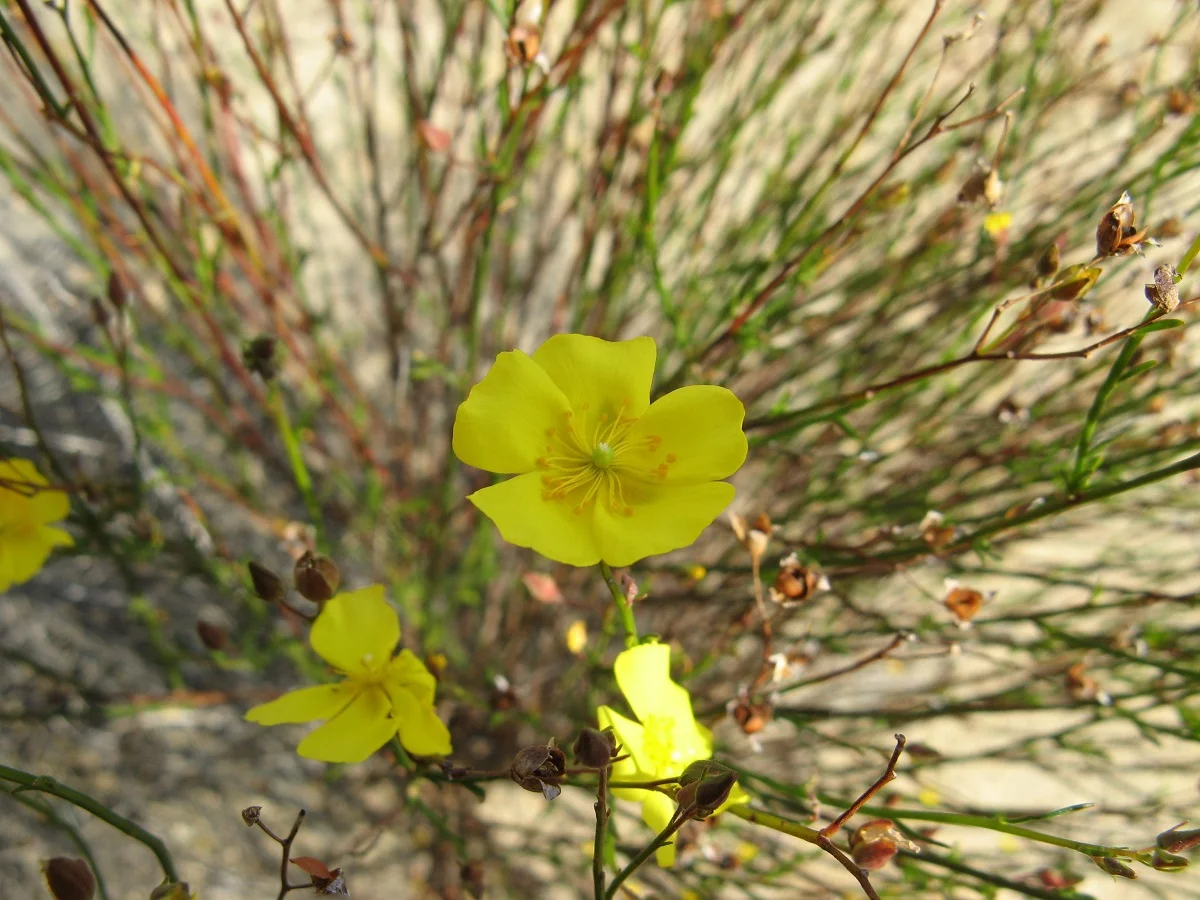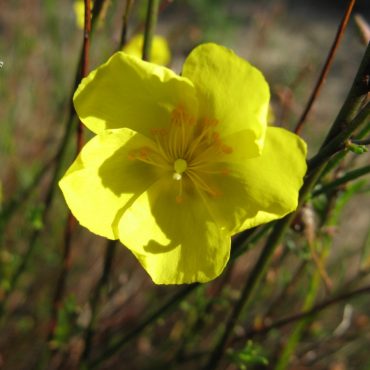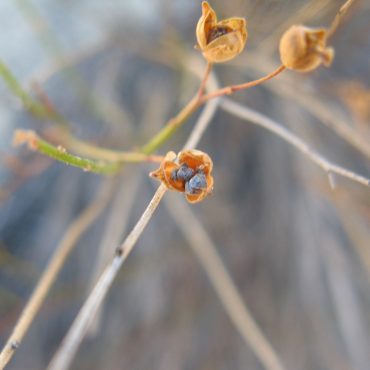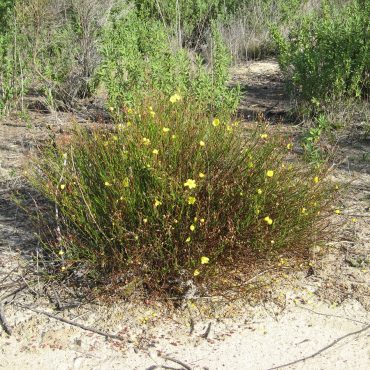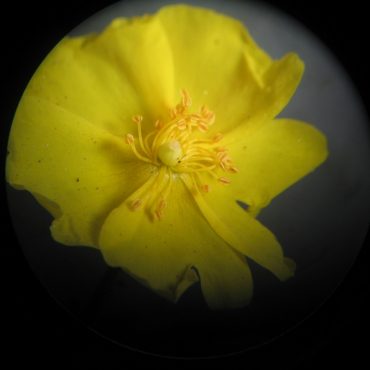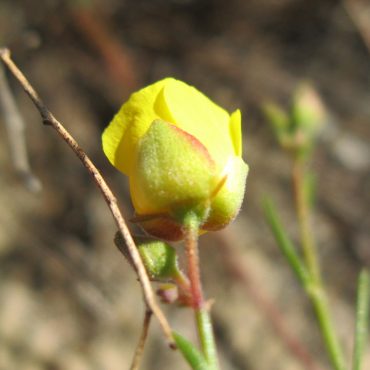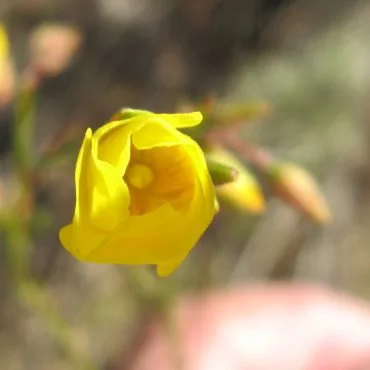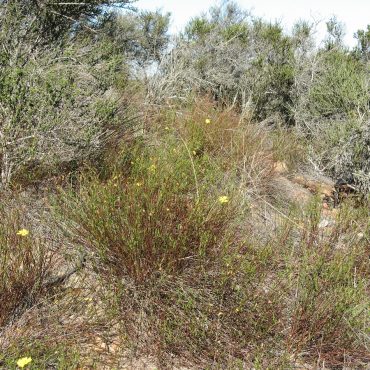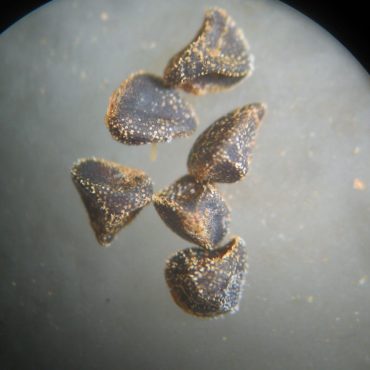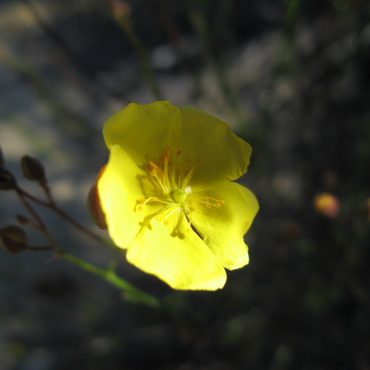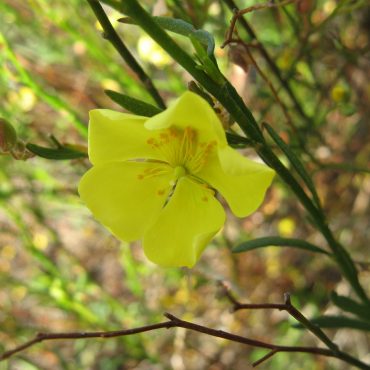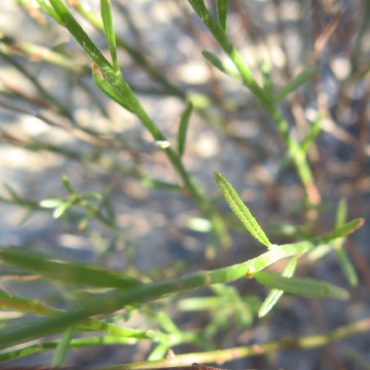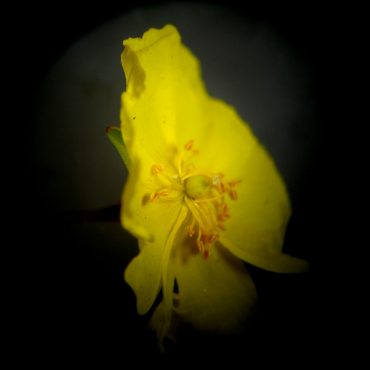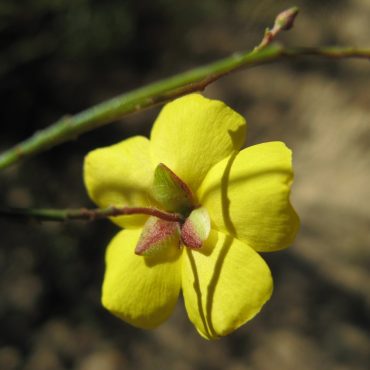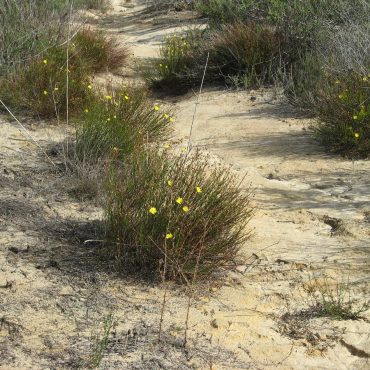Description
2,3,4,59
Rock-rose is a small subshrub, usually less than 1.5 feet (0.5 m) high. Many slender green (photosynthetic) stems arise from the base, extending upward and outward. Leaves are linear, usually less than one inch (2.5 cm) in length, with smooth margins. Leaves are sparse and fall after the main growth period, leaving a spray of bare stems that contain chlorophyll and continue to photosynthesize through the dry summer months. At this stage, a plant with its tuft of bare green stems resembles a small deerweed (Acmispon glaber) or spiny rush (Juncus acutus).
The yellow flowers occur in loose clusters of few to many. They are shallow-dish-shaped, radially symmetrical and bisexual, less than one inch (2.5 cm) in diameter. There are five sepals; three inner sepals are broad and triangular but the outer two are much smaller, linear in shape and inconspicuous, so the calyx appears to have only three sepals, which are green tinged with red. The petals are obovate to fan-shaped. There are 10 or more greenish-yellow stamens in multiples of five, Stamens are of different lengths and somewhat flaccid in appearance, each with a rounded yellow anther. The pistil is yellow with an ovoid, superior ovary; unlike some,4 ours appears unlobed. A short, stout style is topped with a pale stigma with tiny hairy or finger-like projections making it resemble a pom-pom. Flowers often appear after the winter rains begin, but the main bloom time is Mar-July.1
The larger inner sepals persist and enclose the dry, ovoid seedpod which splits open when mature, releasing several small, hard, dark seeds that have rounded or angled sides. Seed coats are very hard and water-impervious.

